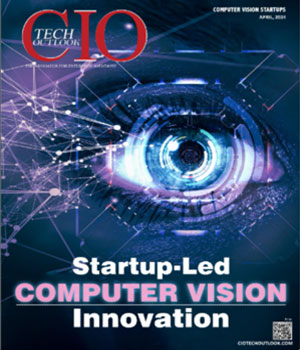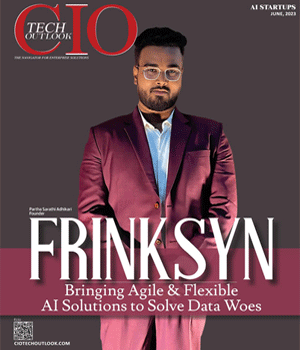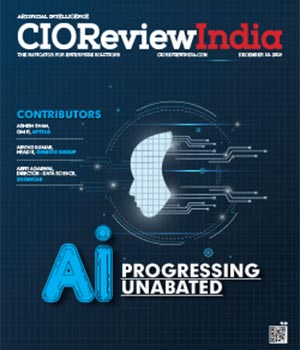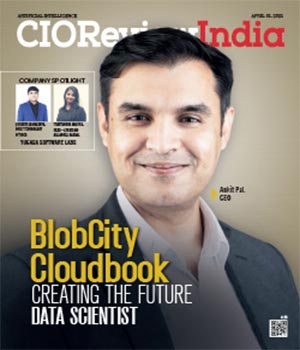
Aligning IT Roadmap with Business Objectives: A Strategic Approach for Maximizing ROI
Subhash singh Punjabi, CISO & Head Enterprise Architecture, Deepak Fertilisers & Petrochemicals Corporation Ltd
 Subhash is a visionary leader with over three decades of experience across the Automotive, Pharmaceutical, Chemical, and Manufacturing sectors. As the Chief Information Security Officer and Head of Enterprise Architecture at Deepak Fertilisers and Petrochemicals Corporation Ltd., he leads strategic initiatives and Industry X.0 transformations, driving innovation through cutting-edge technology and business acumen.
Subhash is a visionary leader with over three decades of experience across the Automotive, Pharmaceutical, Chemical, and Manufacturing sectors. As the Chief Information Security Officer and Head of Enterprise Architecture at Deepak Fertilisers and Petrochemicals Corporation Ltd., he leads strategic initiatives and Industry X.0 transformations, driving innovation through cutting-edge technology and business acumen.
In today's fast-evolving digital world, aligning an IT roadmap with business objectives is no longer optional—it is critical for maximizing Return on Investment (ROI), fostering innovation, and securing long-term organizational success. A structured, value-driven approach ensures that technology investments directly contribute to business outcomes rather than merely serving operational needs. By adopting a strategic lens, companies can transform IT from a cost centre into a business enabler.
Understanding Business Strategy and IT Assessment
The foundation of aligning IT with business lies in deeply understanding the organization's strategic goals, mission, and long-term vision. IT leaders must engage proactively with key stakeholders from various departments like sales, marketing, and finance to capture a full view of the company’s ambitions and challenges. At the same time, a thorough assessment of existing IT capabilities is crucial. This includes conducting external IT audits to evaluate infrastructure, applications, security posture, and business processes. Identifying gaps, legacy system challenges, and opportunities for improvement sets the stage for a robust and realistic IT roadmap.
Prioritizing IT Initiatives Based on Business Value
Once the current state is understood, prioritizing IT initiatives becomes the next critical step. Projects should be evaluated based on their potential impact on business goals and the cost of implementation. A practical framework is to categorize initiatives into four quadrants:

By focusing first on "quick wins" that deliver immediate ROI, organizations build momentum while steadily working towards broader, long-term digital transformation.
Building a Value-Driven, Scalable IT Roadmap
Developing a scalable, phased IT roadmap is essential for guiding implementation while maintaining flexibility. The roadmap should be broken down into short-term (up to one year), mid-term (two to three years), and long-term (beyond three years) goals, aligned with the business’s growth trajectory. Scalability must be at the heart of the design to ensure that IT systems can adapt as the business expands. Budgetary constraints, resource availability, and change management should also be factored into the planning process to avoid execution roadblocks and optimize investments.
Implementing Agile, Future-Ready Technology Solutions
The modern IT roadmap must prioritize agile, scalable solutions that prepare the organization for the future. Embracing technologies such as cloud computing, AI, automation, and data analytics improves operational efficiency and decision-making agility. Equally important is the focus on cybersecurity and compliance to protect digital assets and maintain stakeholder trust. Flexibility is critical solutions must evolve with market conditions and business needs, ensuring that IT remains a dynamic enabler of growth rather than a bottleneck.
Measuring Success and Driving Continuous Innovation
A successful IT-business alignment strategy requires continuous measurement and optimization. Clear KPIs—such as revenue uplift from digital initiatives, cost savings from automation, productivity improvements, and customer satisfaction scores—must be defined and tracked meticulously. Regular reviews allow organizations to refine their strategies based on performance data and emerging business requirements. Simultaneously, IT leaders should stay ahead of technological trends by investing in R&D, fostering a culture of continuous learning, and experimenting with emerging technologies like blockchain, IoT, and AI to maintain competitive advantage.
Conclusion
A strategically aligned IT roadmap is a critical business asset, enabling organizations to maximize ROI, enhance operational efficiency, and fuel sustained innovation. By closely integrating IT initiatives with core business objectives and fostering continuous collaboration across teams, companies can ensure that technology serves not just operational needs but becomes a true engine for growth and transformation.
CIO Viewpoint
Why Foolproof Facial Recognition Is Key Against...
By Joseph Sudheer Thumma, Global CEO & MD, Magellanic Cloud
National Technology Day 2025: Powering Progress...
By CIOTech Outlook Team
Aligning IT Roadmap with Business Objectives: A...
By Subhash singh Punjabi, CISO & Head Enterprise Architecture, Deepak Fertilisers & Petrochemicals Corporation Ltd
CXO Insights
Data Management Strategies for AI-Driven...
By Dr. Parul Naib, Head - Data Science and AI, Reserve Bank Innovation Hub
Revolutionizing Financial Services with...
By Srikanth Appana, Chief Technology Officer, Bajaj Auto Credit Ltd
How to Lead Large-Scale Digital Engineering...









.jpg)
.jpg)
.jpg)









